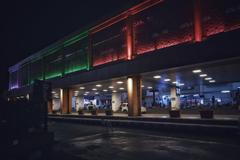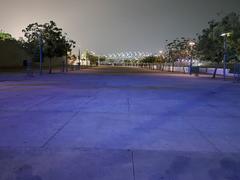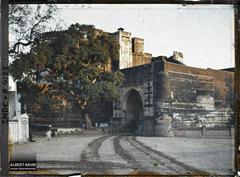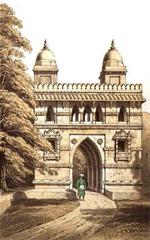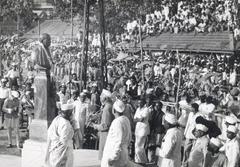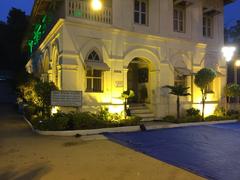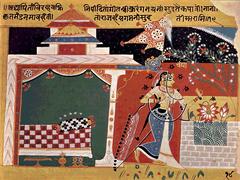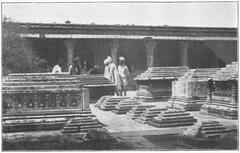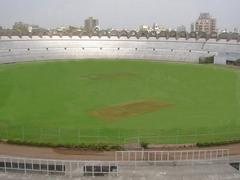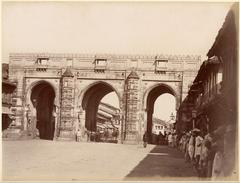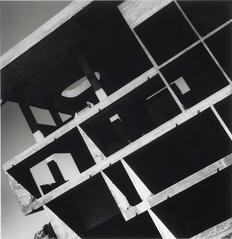Panchkuwa Gate Ahmedabad: Visiting Hours, Tickets, and Travel Guide
Date: 14/06/2025
Introduction
Panchkuwa Gate, locally known as Panchkuva Darwaja, stands as a remarkable testament to Ahmedabad’s layered history and evolving urban character. Strategically positioned in the heart of the Old City, it connects the medieval walled town to the bustling modern metropolis, symbolizing the city’s transformation over centuries. Originally constructed in 1871 during the British colonial era to facilitate access to the new Kalupur Railway Station, Panchkuwa Gate marks the intersection of historic trade routes, architecture, and cultural diversity (Wikipedia: Historic City of Ahmadabad; heritageofahmedabad.com; Yappe.in Panchkuva Darwaja).
This comprehensive guide details Panchkuwa Gate’s historical background, architectural features, visiting hours, ticket information, accessibility, and practical travel tips. It also highlights the vibrant Panchkuwa Sindhi Market, known for its textiles and traditional Gujarati craftsmanship, and provides insights for exploring nearby attractions within Ahmedabad’s UNESCO-listed heritage core (Textile Infomedia; roughguides.com).
Table of Contents
- Historical Background & Architectural Significance
- Visiting Panchkuwa Gate: Hours, Tickets, and Accessibility
- Exploring Panchkuwa Market
- Preservation and Conservation Efforts
- Visitor Information & Nearby Attractions
- Travel Tips
- Frequently Asked Questions (FAQ)
- Conclusion and Final Travel Tips
- References
Historical Background & Architectural Significance
Origins and Evolution
While Ahmedabad’s original walled city was established in 1411 by Sultan Ahmad Shah I, Panchkuwa Gate is a later addition, constructed by the British in 1871. Unlike the Indo-Saracenic or Mughal gates, Panchkuwa Gate was built to provide efficient access to the newly developed Kalupur Railway Station and facilitate modern trade and communication (Wikipedia: Historic City of Ahmadabad; Yappe.in Panchkuva Darwaja).
Architectural Details
Panchkuwa Gate features three pointed arches: a grand central arch (18 feet wide, 28 feet high) and two smaller side arches (7 feet wide, 19 feet high). While more utilitarian than the ornate Sultanate gates, its solid masonry and functional design reflect late 19th-century colonial sensibilities. The gate’s name, meaning “five wells,” references the water sources that once serviced the locality (heritageofahmedabad.com; earthitecture.in).
The gate’s location marks a transition from the dense, traditional pols (residential clusters) of the old city to the expanding commercial zones around the railway. Its continued presence underscores the city’s ability to integrate tradition and modernity.
Visiting Panchkuwa Gate: Hours, Tickets, and Accessibility
Hours and Entry
- Visiting Hours: Panchkuwa Gate is an open public monument, accessible daily from early morning (around 6–7 AM) until 9 PM. Visiting during daylight is recommended for safety and visibility (Yappe.in Panchkuva Darwaja).
- Entry Fee: Admission is free; there are no tickets required.
Accessibility
- Location: Near Kalupur Railway Station; easily accessible via public buses, auto-rickshaws, and taxis.
- Parking: Limited; public transport is recommended.
- Mobility: The area is pedestrian-friendly, but narrow lanes and crowded markets can be challenging for visitors with limited mobility.
Guided Tours
Several local tour operators and NGOs offer guided heritage walks that include Panchkuwa Gate, providing valuable historical and architectural context.
Exploring Panchkuwa Market
Overview
Adjacent to the gate is the renowned Panchkuwa Sindhi Market, a vibrant textile hub that draws both locals and visitors (Textile Infomedia). The market is open daily from 10 AM to 9 PM and is especially famous for:
- Silk, cotton, khadi, and linen textiles
- Bandhani sarees and embroidered dress materials
- Wholesale and retail garment sales
Shopping Experience
- Bargaining: Haggling is customary, especially for bulk purchases.
- Best Time to Visit: Early mornings or late afternoons for a less crowded experience; evenings are lively but busy.
- Local Eats: Street vendors offer Gujarati snacks like dhokla and fafda.
Cultural Importance
The market serves as a commercial and social gathering space, reinforcing the area’s multicultural identity and Ahmedabad’s reputation as a textile powerhouse (TravelTriangle; UNESCO Urban Heritage Atlas).
Preservation and Conservation Efforts
Current Status
Panchkuwa Gate faces threats from pollution, urban encroachment, and heavy traffic. It is protected as a Monument of National Importance by the Archaeological Survey of India, but conservation is challenged by limited resources (gujaratsamachar.com; wikipedia.org).
Restoration Initiatives
Following Ahmedabad’s UNESCO World Heritage City designation in 2017, restoration efforts have focused on structural stabilization and cleaning, though further work is needed to balance preservation with market activity (constructionopportunities.in).
Visitor Information & Nearby Attractions
Nearby Attractions
- Bhadra Fort & Teen Darwaza: Medieval citadel and market hub (Ahmedabad Tourism).
- Manek Chowk: Daytime jewelry market and night-time street food hotspot.
- Sidi Saiyyed Mosque: Famed for its ‘Tree of Life’ stone latticework.
- Kankaria Lake: Leisure, gardens, and amusement activities.
- Calico Museum of Textiles: Rare fabrics and textile history (advance booking recommended).
- Sabarmati Ashram: Gandhi’s residence and museum.
- Law Garden Night Market: Evening handicrafts and street food.
Facilities
- Restrooms: Limited; nearby eateries or hotels may be used.
- Food: Snacks available at local stalls; more options at Manek Chowk.
- Guided Walks: Recommended for deeper heritage insights.
Travel Tips
- Visit during daylight for safety and best photography.
- Dress modestly and respect local customs, especially during religious events.
- Carry water and sun protection, especially in hot months.
- Use public transport to avoid parking issues.
- Be mindful of your belongings in crowded markets.
- Support local conservation by avoiding damage and spreading awareness.
Frequently Asked Questions (FAQ)
Q1: What are the visiting hours for Panchkuwa Gate?
A1: Panchkuwa Gate is accessible daily from early morning to around 9 PM.
Q2: Is there an entry fee?
A2: No, visiting Panchkuwa Gate is completely free.
Q3: How can I reach Panchkuwa Gate?
A3: The gate is near Kalupur Railway Station and accessible by public buses, auto-rickshaws, and taxis.
Q4: Are guided tours available?
A4: Yes, several heritage walks and city tours include Panchkuwa Gate.
Q5: Is Panchkuwa Gate wheelchair accessible?
A5: The area is crowded and the terrain uneven; accessibility may be limited for wheelchairs.
Q6: What can I buy at Panchkuwa Market?
A6: Traditional textiles, Bandhani sarees, embroidered dress materials, and souvenirs.
Conclusion and Final Travel Tips
Panchkuwa Gate encapsulates Ahmedabad’s dynamic evolution from a fortified medieval city to a commercial and cultural powerhouse. Its colonial-era architecture, vibrant adjacent market, and proximity to major heritage attractions make it an essential stop for any visitor. Free entry, daily access, and a rich surrounding urban context provide a rewarding experience for history buffs, shoppers, and explorers alike.
For the fullest experience, combine your visit with a heritage walk, enjoy local cuisine, and engage with the community. To enrich your journey, download the Audiala app for curated guides, up-to-date visiting information, and exclusive local tips.
Panchkuwa Gate is not just a monument—it’s a living chapter in Ahmedabad’s ongoing story, inviting every traveler to step through its arches and into the city’s vibrant heritage (UNESCO Urban Heritage Atlas).
References
- Wikipedia: Historic City of Ahmadabad
- Panchkuva Darwaja, Yappe.in
- Heritage of Ahmedabad - Panchkuwa Gate
- Textile Infomedia - Panchkuwa Sindhi Market
- Architecture of Ahmedabad, Earthitecture.in
- Old Ahmedabad’s Journey from UNESCO Recognition to Preservation Struggles, Gujarat Samachar
- Ahmedabad Sightseeing, Holidify
- UNESCO Urban Heritage Atlas - Ahmedabad
- Gates of Ahmedabad, Wikipedia
- Ahmedabad Tourism Official Site
- TravelTriangle - Shopping in Ahmedabad
- Construction Opportunities
- Rough Guides - Ahmedabad
